
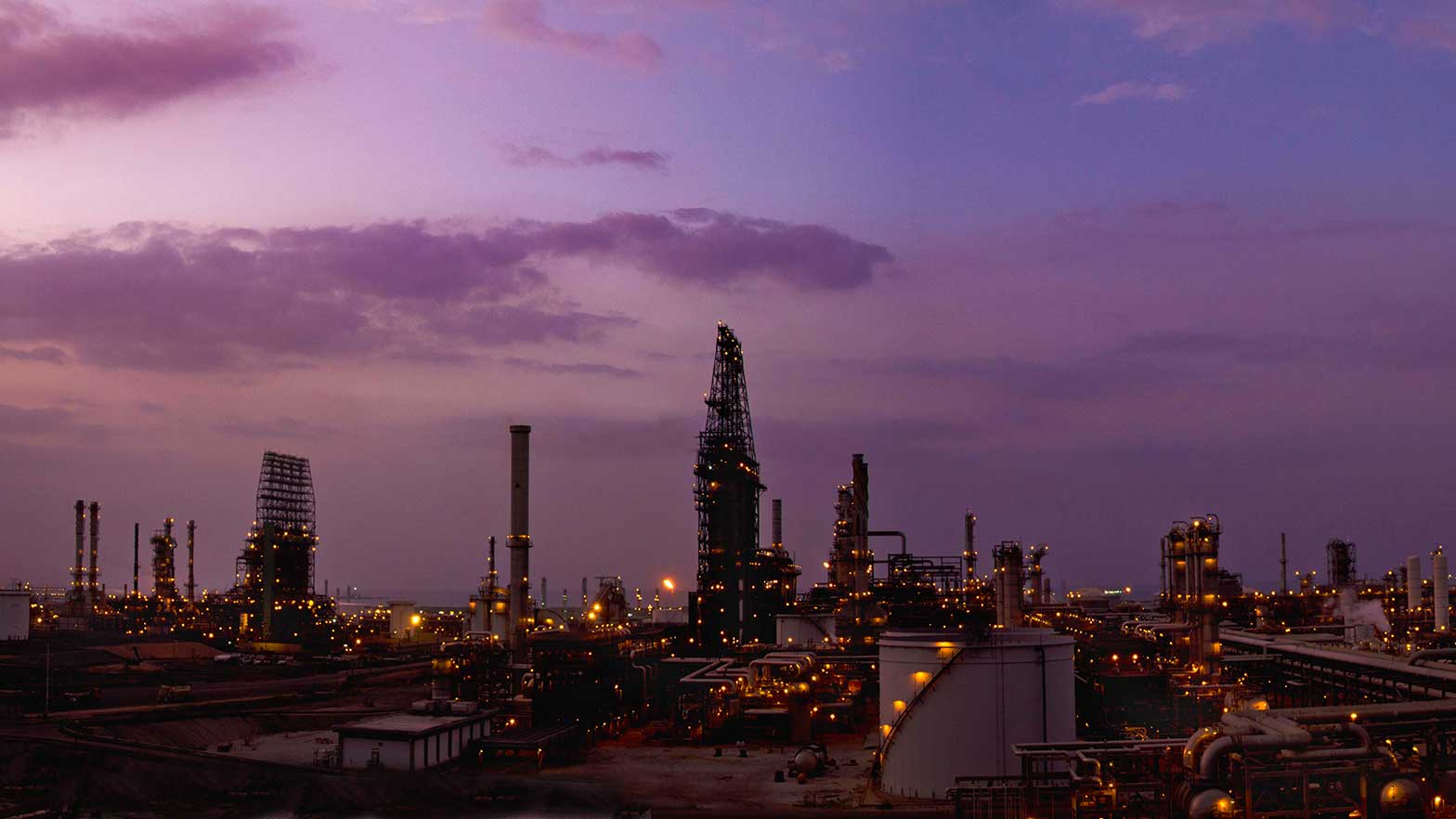
100 years making history
Venezuela
highlights of activities
Chevron is one of the leading private oil companies in Venezuela and our presence in the country began with exploration activities in 1923, and the discovery of Boscan field in 1946.
Delivering energy requires working with trusted partners who succeed when we succeed. Chevron works in partnership with affiliates of Petróleos de Venezuela (PDVSA), Venezuela’s National Oil Company, in five onshore and offshore production projects in Western and Eastern Venezuela, in compliance with applicable laws and regulations.
operations in venezuela
5
onshore and offshore production projects
partnering in venezuela
4
non-operated joint-venture operations in partnership with PDVSA
focus on heavy crude
3
heavy or extra-heavy crude oil projects
technology transfer
Chevron and its partners have historically made significant capital investments in Venezuela, helped develop the national workforce and promoted the use of local resources.
Chevron made important contributions by bringing our most effective methods to the Venezuelan oil industry.
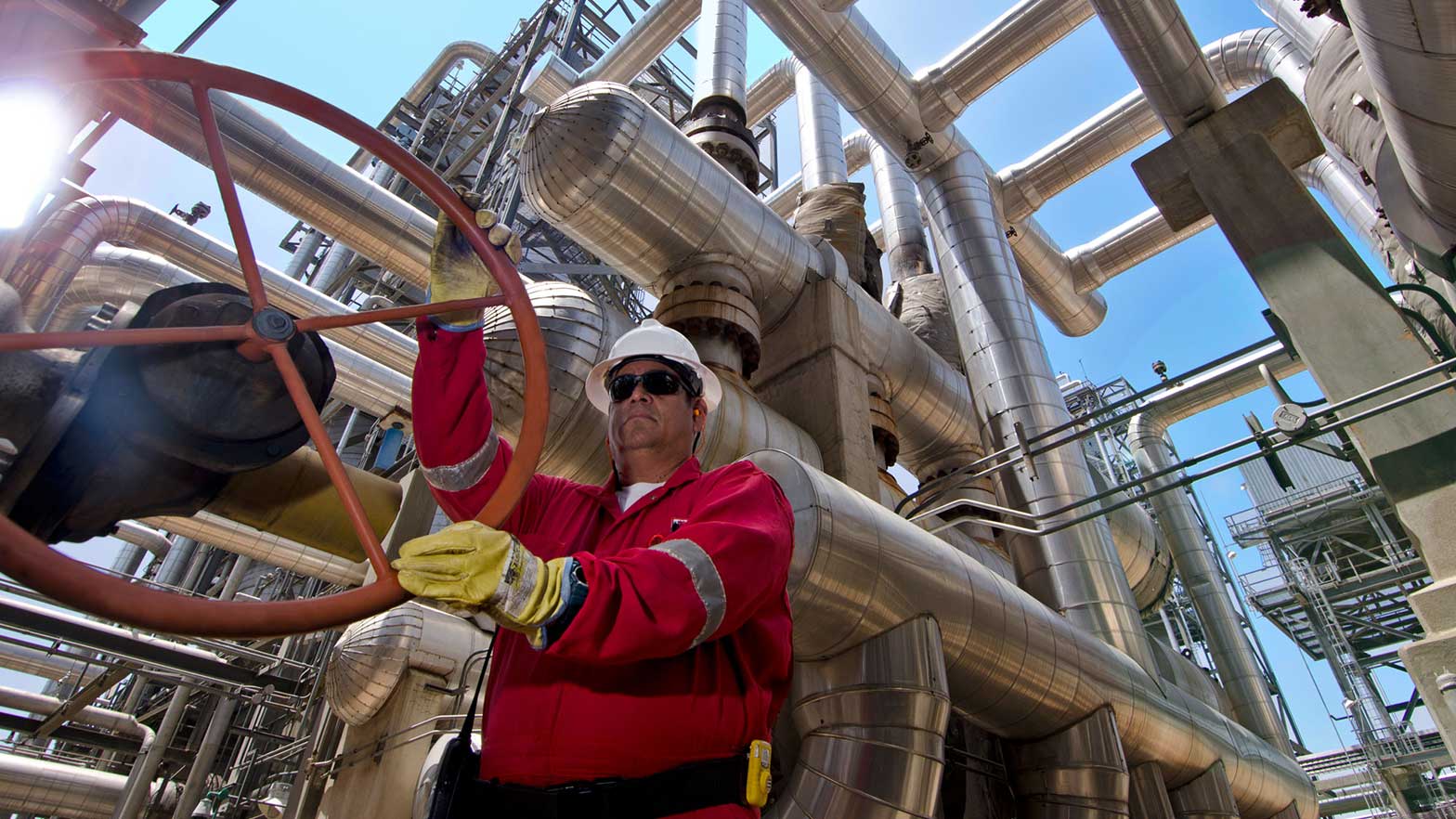
business portfolio
exploration and production
We participate in the following projects in Venezuela.
petroboscán
- Operated by Petroboscán, S.A.
- 39.2 percent Chevron interest.
- Boscan Field.
- Zulia State, Western Venezuela.
petroindependiente
- Operated by Petroindependiente, S.A.
- 25.2 percent Chevron interest.
- LL-652 Field.
- Lake Maracaibo.
petropiar
- Operated by Petropiar, S.A.
- 30 percent Chevron interest.
- Orinoco Belt.
- This vertically integrated project processes extra-heavy crude oil from the Huyapari Field and upgrades it to a lighter, higher-value synthetic oil.
petroindependencia
- Operated by Petroindependencia, S.A.
- 34 percent Chevron interest.
- Carabobo 3 Project.
- This extra-heavy oil project is in three blocks within the Carabobo area of the Orinoco Belt.
loran
- Gas project in Block 2 Plataforma Deltana – Offshore.
- 60 percent Chevron interest.
- The Loran Field in Block 2 forms a single cross-border field along the maritime border of Venezuela and Trinidad and Tobago.
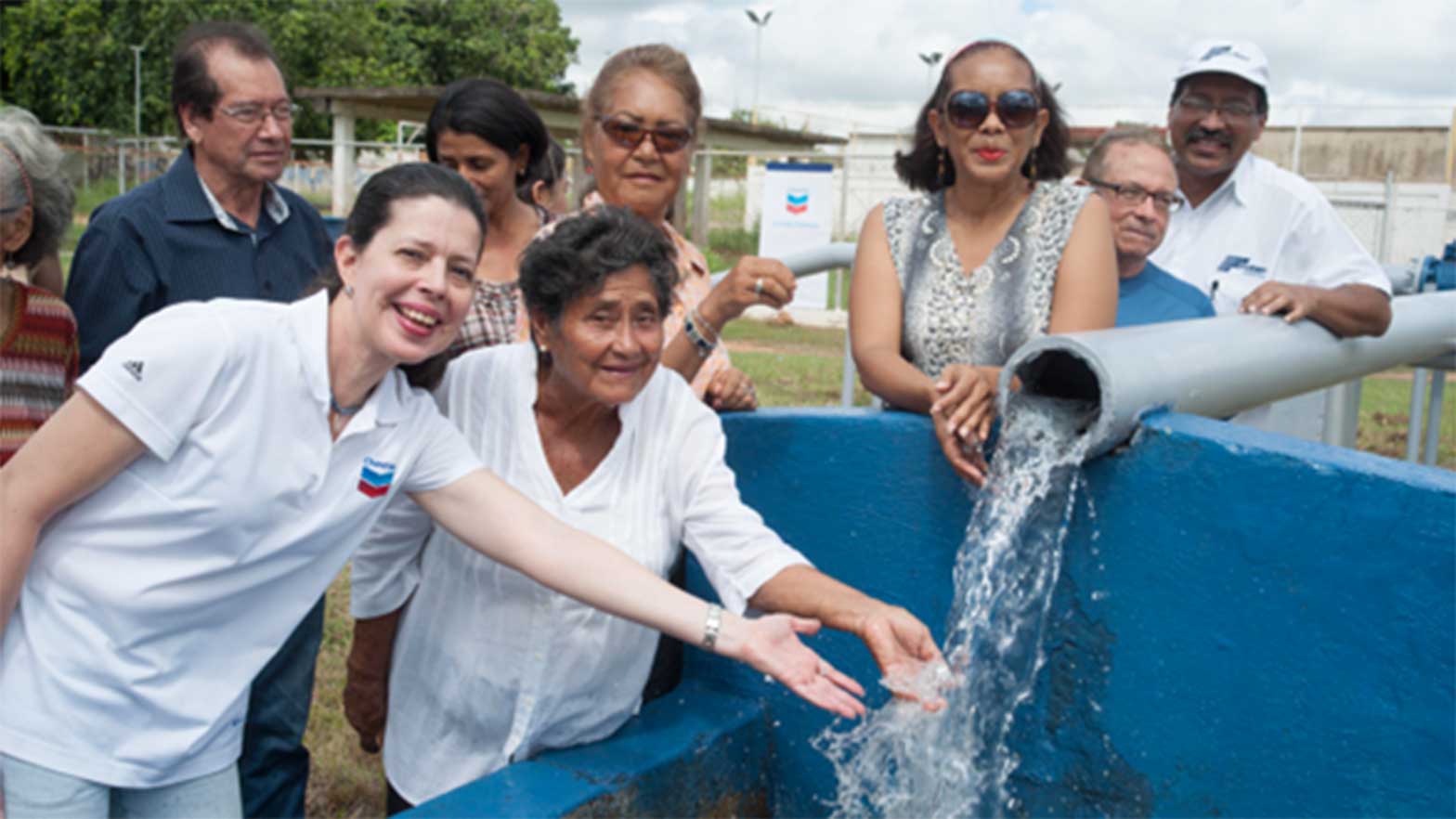
in the community
Our social investment strategy aims to strengthen local communities with programs that deliver measurable and sustainable results. Our efforts are focused on three core areas: health, education, and economic development of our communities in Caracas, Anzoátegui, Delta Amacuro and Zulia state, where our operational areas are located, as permitted by applicable law and regulations.
In the past 15 years, Chevron’s social investment contributions in Venezuela totaled more than $115 million, benefiting over 580,000 Venezuelans with health, education, and economic development programs. Chevron currently implements social investment projects in four states in Venezuela.
Since 2019, and in accordance with applicable laws, Chevron has invested $7 million in the Venezuela Relief Initiative, a cluster of programs selected in consultation with a variety of local and international organizations, in alignment with the United Nations Humanitarian Response Plan and complimentary to USAID programs. Programs are being executed in partnership with long-established and reliable implementing partners, such as the Red Cross International and the Pledge for Venezuela. The programs are aimed at providing vulnerable communities with access to potable Water, Sanitation and Hygiene (WASH program), medical support, and nutrition.
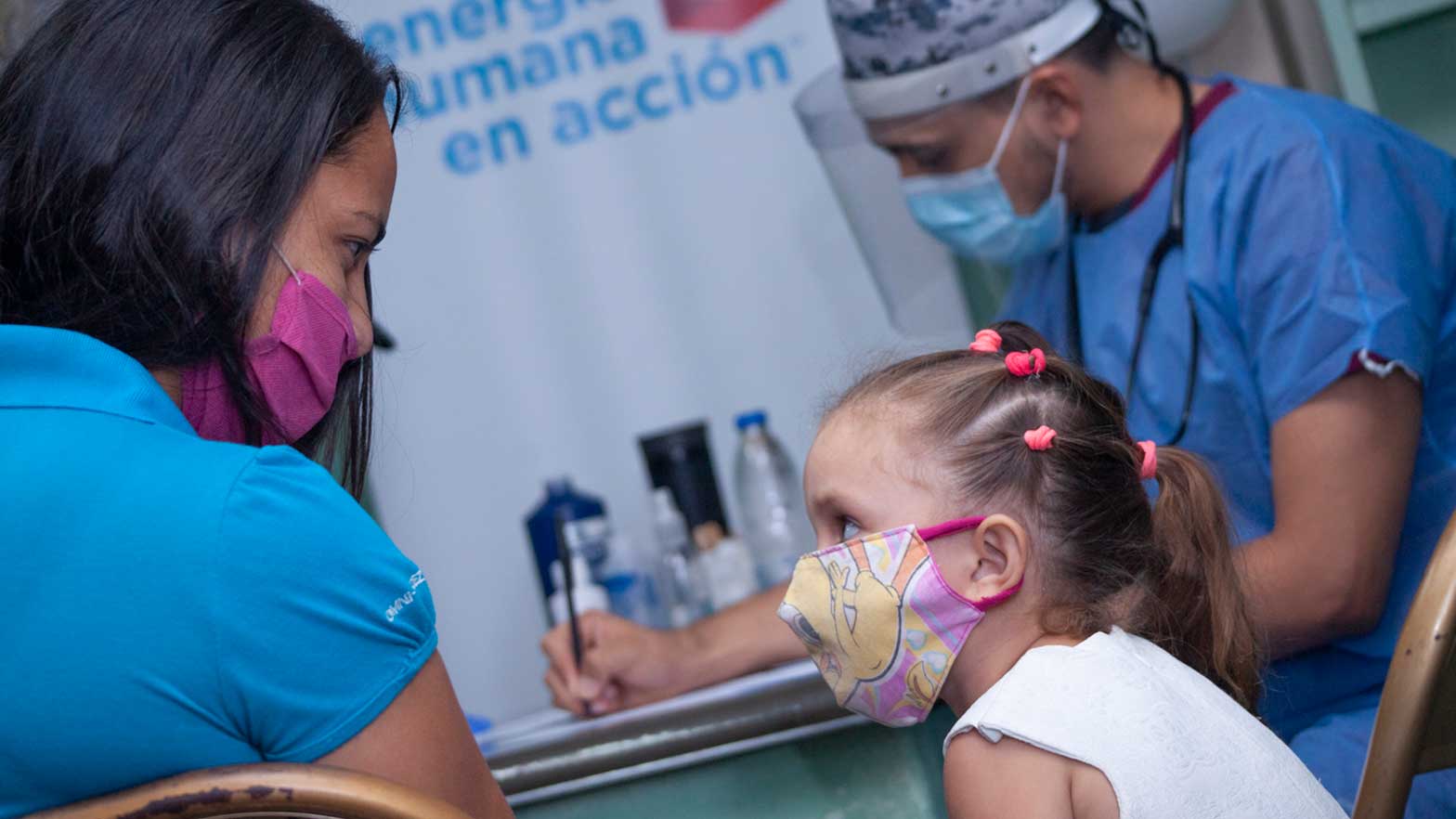
health
- Chevron supports organizations to provide free cleft and lip palate surgeries. This has benefited more than 5,000 children and adults with cranial malformations often caused by malnutrition. Chevron volunteers have been key supporters, helping provide a range of services to patients and their families throughout the treatment process. They have helped parents fill out medical forms, served as translators, taken children to recreational activities and donated toys and clothes.
- The alliance between Hogar Clínica San Rafael and Chevron has lasted for over a decade. It includes the sponsorship of the children’s surgical program and financial support to execute significant improvements within its facilities. In 2022, two of the Hogar Clínica San Rafael’s operating rooms were refurbished and equipped thanks to Chevron’s support to benefit over 8,000 patients seeking medical attention at this healthcare center in Maracaibo annually.
- Chevron completed the rehabilitation of water wells systems in three communities in Anzoategui State, including one of the most important hospitals in the area to improve access to potable water and benefit to more than fifteen thousand inhabitants. Chevron aims to continue to add water wells in subsequent years.
- As part of the healthy communities’ projects executed in eastern Venezuela, since 2004 Chevron has annually supported kids with cancer. In 2018, Chevron initiated new efforts to be positioned as a major contributor on fighting cancer in the east region through the donation of the headquarter for Oncoaliado that aims to offer medical and oncological attention and telemedicine service available for all over the country with high-level specialists, among others. Additionally, Chevron donated a van to facilitate transportation for cancer patients, families, and medical staff.
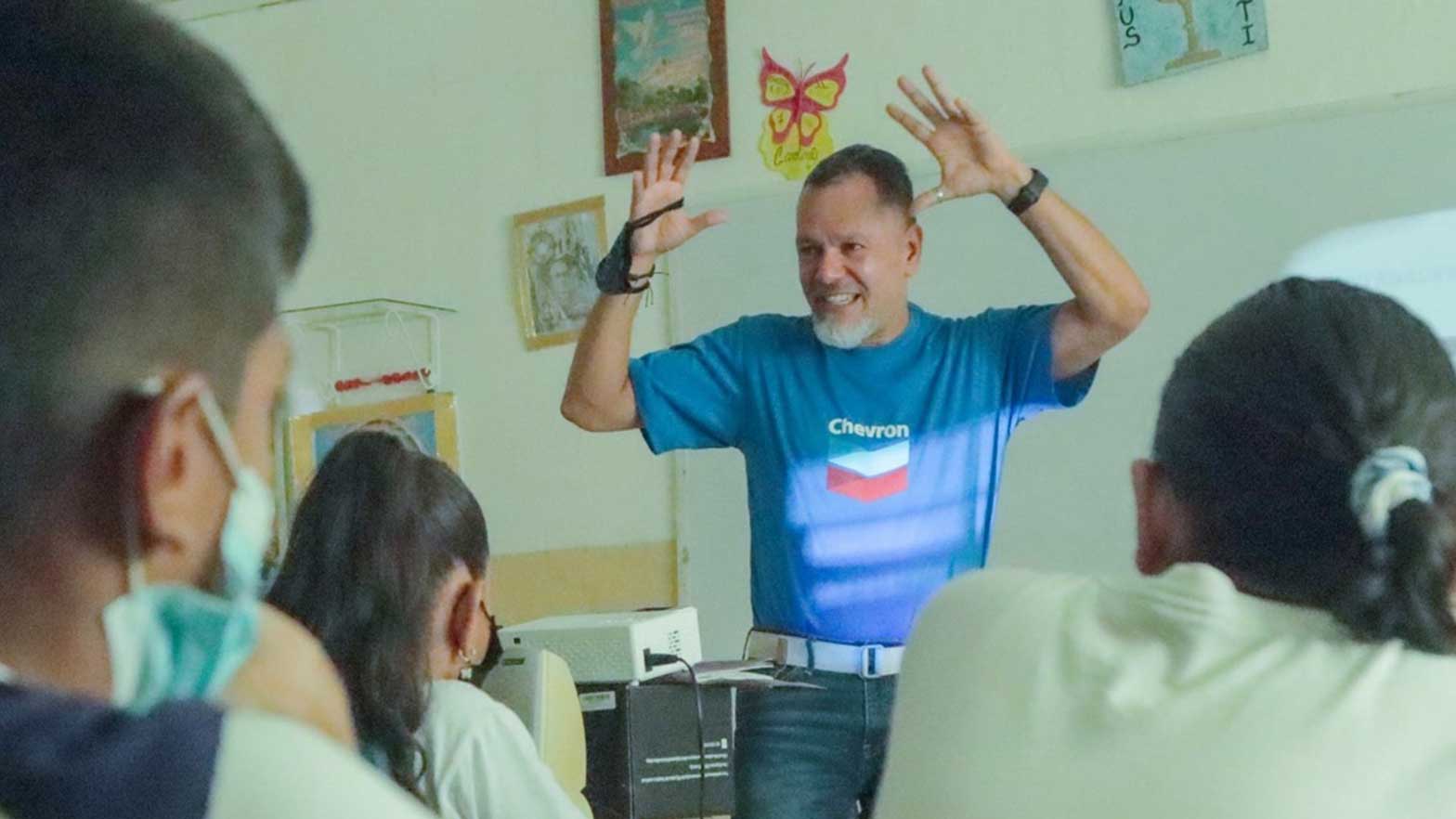
education
Education is the foundation for sustainable development. Since 2005, Chevron has worked with Venezuela’s Ministry of Education as permitted by applicable law and regulations to expand resources and opportunities for educators and students ranging from elementary to post graduate studies.
- Chevron supports the “Aula 20” teacher training program, a nationwide project which combines best practices in reading, writing, mathematics, and teaching techniques. It has been deployed at schools in Anzoátegui, Miranda, Monagas, Sucre and Zulia states benefitting about 9,000 students yearly.
- Chevron’s partnership with the Venezuelan American Friendship Association began 15 years ago, as permitted by appliable law and regulations. This program provides university scholarships nationwide to socio-economically disadvantaged students through the Pro Excellence Program, which includes mentoring, specialized training based on the United Nations skills and competencies, and English language skills.
- Since 2018, Chevron has supported the Fe y Alegría Educational Complex that offers oil and non-oil trades and technical trainings for entrepreneurs. This year, Chevron is working on the 2nd phase to expand the infrastructure of the educational complex located in El Tigre, eastern Venezuela.

economic development
- Chevron has been supporting the Emprered and Empremujer entrepreneurship programs since 2004. Between 2009 ‐ 2022, the programs provided training on how to start and run small businesses to more than 24,000 entrepreneurs in five states. In addition, the “Dressed for Dreams” program offers training in the craft of sewing to low-income women and victims of violence
- The “Maraisa” project strengthens the earning power of indigenous Warao artisans in Delta Amacuro state, who create fair trade export quality baskets, hammocks, and jewelry. Since 2009, more than 3,300 people have been benefited with training in craft techniques and marketing
contact
Submit a résumé via email to Chevron.
CAUTIONARY STATEMENTS RELEVANT TO FORWARD-LOOKING INFORMATION FOR THE PURPOSE OF “SAFE HARBOR” PROVISIONS OF THE PRIVATE SECURITIES LITIGATION REFORM ACT OF 1995 AND OTHER IMPORTANT LEGAL DISCLAIMERS
This website contains forward-looking images and statements relating to Chevron’s operations and lower carbon strategy that are based on management's current expectations, estimates and projections about the petroleum, chemicals and other energy-related industries. Words or phrases such as “anticipates,” “expects,” “intends,” “plans,” “targets,” “advances,” “commits,” “drives,” “aims,” “forecasts,” “projects,” “believes,” “approaches,” “seeks,” “schedules,” “estimates,” “positions,” “pursues,” “progress,” “may,” “can,” “could,” “should,” “will,” “budgets,” “outlook,” “trends,” “guidance,” “focus,” “on track,” “goals,” “objectives,” “strategies,” “opportunities,” “poised,” “potential,” “ambitions,” “aspires” and similar expressions, and variations or negatives of these words, are intended to identify such forward-looking statements, but not all forward-looking statements include such words. These statements are not guarantees of future performance and are subject to numerous risks, uncertainties and other factors, many of which are beyond the company’s control and are difficult to predict. Therefore, actual outcomes and results may differ materially from what is expressed or forecasted in such forward-looking statements. Our ability to achieve any aspiration, target or objective outlined in this report is subject to numerous risks, many of which are outside of our control. Examples of such risks include: (1) sufficient and substantial advances in technology, including the continuing progress of commercially viable technologies and low- or non-carbon-based energy sources; (2) laws, governmental regulation, policies, and other enabling actions, including those regarding subsidies, tax and other incentives as well as the granting of necessary permits by governing authorities; (3) the availability and acceptability of cost-effective, verifiable carbon credits; (4) the availability of suppliers that can meet our sustainability-related standards; (5) evolving regulatory requirements, including changes to IPCC’s Global Warming Potentials and U.S. EPA Greenhouse Gas Reporting Program, affecting ESG standards or disclosures; (6) evolving standards for tracking and reporting on emissions and emissions reductions and removals; (7) customers’ and consumers’ preferences and use of the company’s products or substitute products; (8) actions taken by the company’s competitors in response to legislation and regulations; and (9) successful negotiations for carbon capture and storage and nature-based solutions. Further, standards of measurement and performance set forth in this report made in reference to our environmental, social, governance, and other sustainability plans, goals and targets may be based on protocols, processes and assumptions that continue to evolve and are subject to change in the future, including due to the impact of future regulation. The reader should not place undue reliance on these forward-looking statements. Unless legally required, Chevron undertakes no obligation to update publicly any forward-looking statements, whether as a result of new information, future events or otherwise.
Among the important factors that could cause actual results to differ materially from those in the forward-looking statements are: changing crude oil and natural gas prices and demand for the company’s products, and production curtailments due to market conditions; crude oil production quotas or other actions that might be imposed by the Organization of Petroleum Exporting Countries and other producing countries; technological advancements; changes to government policies in the countries in which the company operates; public health crises, such as pandemics and epidemics, and any related government policies and actions; disruptions in the company’s global supply chain, including supply chain constraints and escalation of the cost of goods and services; changing economic, regulatory and political environments in the various countries in which the company operates; general domestic and international economic, market and political conditions, including the military conflict between Russia and Ukraine, the conflict in Israel and the global response to these hostilities; changing refining, marketing and chemicals margins; the company’s ability to realize anticipated cost savings and efficiencies associated with enterprise structural cost reduction initiatives; actions of competitors or regulators; timing of exploration expenses; timing of crude oil liftings; the competitiveness of alternate-energy sources or product substitutes; development of large carbon capture and offset markets; the results of operations and financial condition of the company’s suppliers, vendors, partners and equity affiliates; the inability or failure of the company’s joint-venture partners to fund their share of operations and development activities; the potential failure to achieve expected net production from existing and future crude oil and natural gas development projects; potential delays in the development, construction or start-up of planned projects; the potential disruption or interruption of the company’s operations due to war, accidents, political events, civil unrest, severe weather, cyber threats, terrorist acts, or other natural or human causes beyond the company’s control; the potential liability for remedial actions or assessments under existing or future environmental regulations and litigation; significant operational, investment or product changes undertaken or required by existing or future environmental statutes and regulations, including international agreements and national or regional legislation and regulatory measures related to greenhouse gas emissions and climate change; the potential liability resulting from pending or future litigation; the risk that regulatory approvals and clearances related to the Hess Corporation (Hess) transaction are not obtained or are obtained subject to conditions that are not anticipated by the company and Hess; potential delays in consummating the Hess transaction, including as a result of the ongoing arbitration proceedings regarding preemptive rights in the Stabroek Block joint operating agreement; risks that such ongoing arbitration is not satisfactorily resolved and the potential transaction fails to be consummated; uncertainties as to whether the potential transaction, if consummated, will achieve its anticipated economic benefits, including as a result of risks associated with third party contracts containing material consent, anti-assignment, transfer or other provisions that may be related to the potential transaction that are not waived or otherwise satisfactorily resolved; the company’s ability to integrate Hess’ operations in a successful manner and in the expected time period; the possibility that any of the anticipated benefits and projected synergies of the potential transaction will not be realized or will not be realized within the expected time period; the company’s future acquisitions or dispositions of assets or shares or the delay or failure of such transactions to close based on required closing conditions; the potential for gains and losses from asset dispositions or impairments; government mandated sales, divestitures, recapitalizations, taxes and tax audits, tariffs, sanctions, changes in fiscal terms or restrictions on scope of company operations; foreign currency movements compared with the U.S. dollar; higher inflation and related impacts; material reductions in corporate liquidity and access to debt markets; changes to the company’s capital allocation strategies; the effects of changed accounting rules under generally accepted accounting principles promulgated by rule-setting bodies; the company’s ability to identify and mitigate the risks and hazards inherent in operating in the global energy industry; and the factors set forth under the heading “Risk Factors” on pages 20 through 26 of the company’s 2023 Annual Report on Form 10-K and in subsequent filings with the U.S. Securities and Exchange Commission. Other unpredictable or unknown factors not discussed on this website could also have material adverse effects on forward-looking statements.
For the latest figures, view the 2023 Supplement to the Annual Report.
downloads
- 2023 Annual Report pdf opens in new window
- 2023 Corporate Sustainability Report
- The Chevron Way – English pdf opens in new window
related videos
- Music Education: Improving the Lives of Children in Venezuela video opens in new window
- Educación Musical: Mejorando la Vida de los Niños en Venezuela video opens in new window
more resources
- Empowering Women in Latin America: A Case Study pdf opens in new window
- Latin America 2016 Corporate Responsibility Report pdf opens in new window
- Latin America 2016 Corporate Responsibility Report – Spanish pdf opens in new window
- The Chevron Way - Spanish - Latin American pdf opens in new window
- Go to Chevron Careers opens in new window
- Glossary of Energy and Financial Terms pdf opens in new window